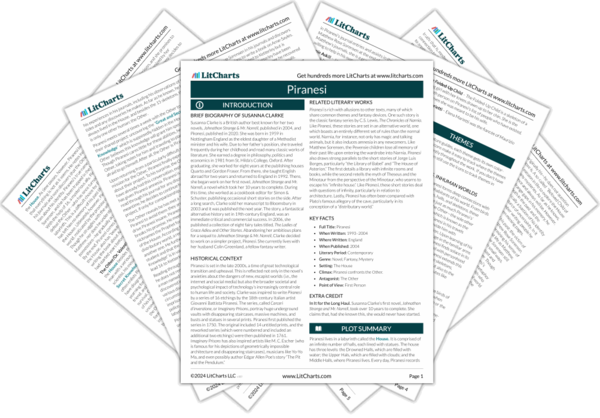Gradually, Piranesi/Matthew begins to find ways to incorporate his two worlds: that of the House, and that of Statues, for instance, prove surprisingly useful to Piranesi: in confusing situations, Piranesi looks to them for clarity. In this way, the world of the House and the real world begin to converge.
